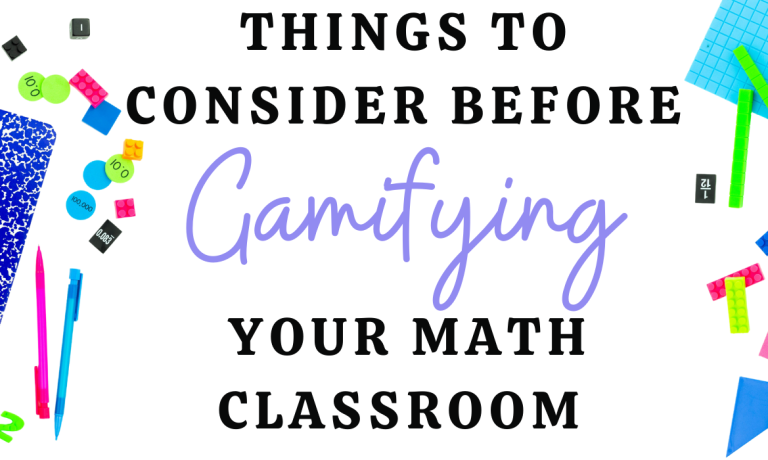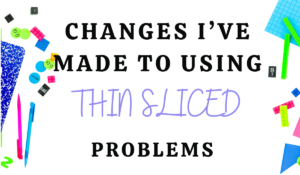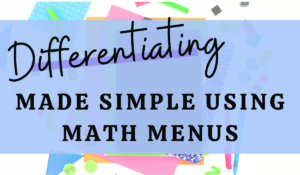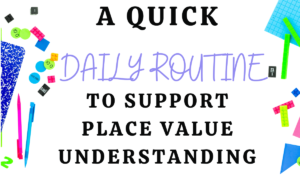I am sure you have heard of gamifying your classroom…it is all the rage right now. When remote learning started, we were flooded with new websites every week that were finding ways for educators to make their learning environment gamified! As things started going back to normal, gamifying your classroom was something that stuck. But is it something that we should keep in our classes? This blog post will talk about things to consider before gamifying your math classroom.
I love using games. I think most educators would say gamifying your classroom is a way to get students engaged, which can be hard. But is this always the best option? After a lot of experience, I have a few questions I ask myself before I gamify my classroom.
Is speed necessary?
This is an important one for me. I do not do timed multiplication activities, minute to win-it, or anything of that nature. I stress to my students that the best mathematicians take their time. So then what example am I setting when I put a game in front of them where they win more points if they finish faster? I always get the argument that if you can solve problems faster, math will be easier for you in the long run. But there is a difference between speed and fluency. Christina Tondevold says it best when she says “Fast Does Not Mean Fluent.” Watch more of her video here where she talks about students are fluent with numbers when they are fast, accurate, and flexible with numbers. Speed is just one part of that, but it is the part that students get the most hung up on. If a game requires the winner to be only the fastest, I will not use it.
What do I want my students to get out of this?
This is for the kids. If I am gamifying a lesson, it should be for their benefit. So what are they getting out of this? There should be an outcome. Are they practicing a skill? Working on working together as a group? Are they working on problem solving? Solving a puzzle? What is the point for the students? Too often we gamify the classroom because as the teacher, we need a break. I get that, I do. But we need to make sure that we turn it back around know what we want the kids to get out of it. If there is a visible outcome, and there often is, I always go for it!
Is winning more important than learning?
We all know the type…the person that will bowl over everyone around them and act however they want, just to win. And I am not just talking about kids, grownups do this too. Make sure you know your students. Like in the previous section, we want there to be an outcome for kids. That outcome should be some type of learning. It could be learning related to a math skill or learning related to a social skill. But if the idea of winning is completely overpowering the idea of learning, there might be a need to take a step back.
Am I doing this just to boost engagement?
There is nothing wrong with wanting to boost engagement. Students learn more when they are engaged. But when I am gamifying an activity, I think about the outcomes of that activity verses the outcomes if I were to do it a different way that was not gamified. If I think the students will get more out of the game, I will do it. But if I think there are too many obstacles in the way, such as all of the things mentioned above, then I won’t. I take a step back and think about other ways I can boost engagement. Not everything is either a big game or a boring worksheet. There is an in between, and that is where I spend most of my time. Using math menus has really helped this! I want both the engagement and the learning to be high, and often times with games, the engagement outweighs the learning. Again, there is always a time and place for this (it is almost June, I will take engagement any day right now!)
There is nothing wrong with gamifying your classroom. You know yourself and your students best. For me, I consider these things before gamifying my math classroom. I want to make sure that not only are my students engaged, but they are also learning in a way that is best suited for them. I love using games. Play is very important for students. But there is a difference between letting students play and making our whole lesson centered around a game where the fastest person wins. Not seeing that difference can cause more math trauma for students and can cause your plan to backfire. In the end, knowing your students and your objective can help you decide the way you want your lesson to go.








